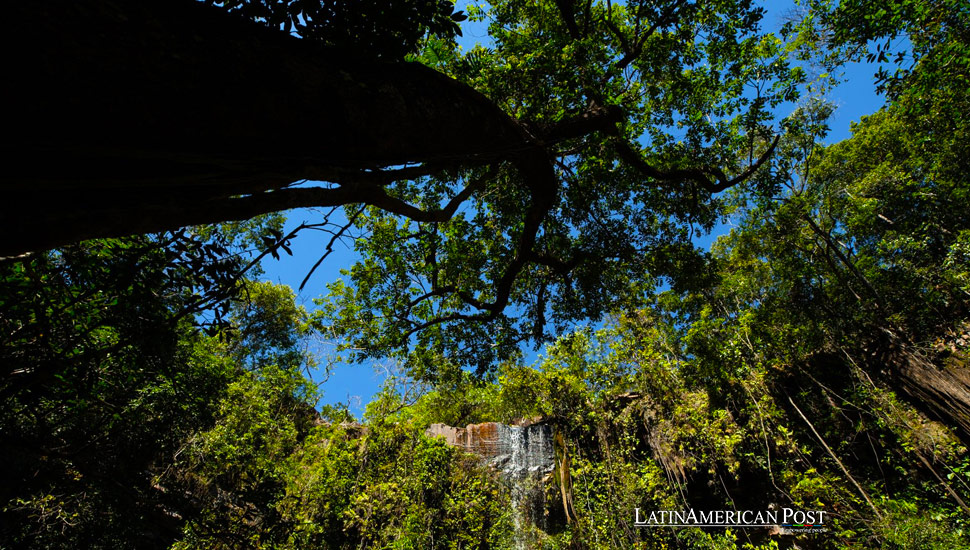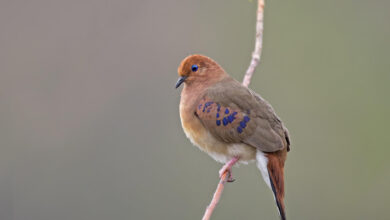Brazil’s Atlantic Forest Faces Continued Threats Despite Decrease in Deforestation

The Atlantic Forest, one of Brazil’s most threatened ecosystems, saw a 27% reduction in deforestation last year, but the devastation remains significant, highlighting ongoing environmental challenges.
The Atlantic Forest, known as the Mata Atlântica in Portuguese, is a vital yet endangered ecosystem that stretches along Brazil’s coastline. Despite a reduction in deforestation rates in the past year, this precious biome continues to face severe threats. According to a study released by SOS Mata Atlântica, the forest lost 146.9 square kilometers of vegetation cover in 2023, marking a 27% decrease from the previous year’s deforestation figures. However, the situation remains dire, as the area deforested in 2023 surpasses the deforestation rates recorded in 2018, 2019, and 2020.
The Atlantic Forest once covered approximately 1.3 million square kilometers, extending from the northeastern state of Rio Grande do Norte down to Rio Grande do Sul in the south. Today, only 12.4% of its original vegetation remains, with the remaining forested areas spread across 156,000 square kilometers. This drastic reduction in coverage has positioned the Atlantic Forest as one of the most threatened ecosystems in Brazil.
Deforestation in the Atlantic Forest dates back to the colonial era when Portuguese settlers cleared vast tracts of forest for sugar cane plantations and later for coffee cultivation. Brazil’s industrialization further accelerated deforestation, as urbanization and agricultural expansion took precedence over conservation efforts. The forest is home to a rich diversity of flora and fauna, with many species found nowhere else on Earth. However, it also houses nearly 50% of Brazil’s population, putting immense pressure on its resources.
Recent Trends in Deforestation
The SOS Mata Atlântica’s Deforestation Alert System reported that deforestation in the Atlantic Forest covered 200.7 square kilometers in 2022. The reduction to 146.9 square kilometers in 2023 is a positive sign, but it is tempered by the fact that this figure is still higher than those recorded in the three years before 2022. The data was gathered through satellite imagery analysis conducted by Brazil’s National Institute for Space Research (INPE).
Despite the overall reduction, certain areas experienced an alarming increase in deforestation. Specifically, isolated patches of the Atlantic Forest within other biomes and regions bordering the Cerrado (Brazilian savanna) and the Caatinga (semi-arid scrubland) saw a 53.7% rise in deforestation, totaling 694.3 square kilometers. These findings underscore the uneven nature of conservation efforts and the persistent threats to different parts of the forest.
Agricultural expansion and urbanization are the primary drivers of deforestation in the Atlantic Forest. In 2023, 6,850 out of 7,270 deforestation events were linked to converting forest land into agricultural fields. The remaining 70 events were attributed to urban sprawl. This trend reflects the broader pressures of Brazil’s economic activities on its natural landscapes.
The Atlantic Forest’s rich biodiversity includes numerous species of plants, birds, mammals, and insects. The loss of forest cover threatens these species and disrupts the ecosystem services that the forest provides, such as water regulation, carbon sequestration, and soil stabilization. Additionally, deforestation contributes to climate change, as the removal of trees releases stored carbon into the atmosphere.
The Role of Environmental Organizations
Environmental organizations like SOS Mata Atlântica play a crucial role in monitoring and advocating for the conservation of the Atlantic Forest. Their work involves tracking deforestation rates and engaging with policymakers, local communities, and the public to raise awareness about the importance of preserving this unique ecosystem.
Efforts to combat deforestation include reforestation projects, creating protected areas, and promoting sustainable land-use practices. Legal frameworks, such as Brazil’s Forest Code, mandate the preservation of native vegetation, but enforcement remains a significant challenge. Corruption, lack of resources, and competing economic interests often undermine conservation efforts.
The plight of the Atlantic Forest is part of a larger global narrative of deforestation and biodiversity loss. Forests worldwide are being cleared at alarming rates to make way for agriculture, mining, and urban development. This trend has profound implications for global biodiversity, climate stability, and human well-being.
International cooperation and support are essential for the conservation of forests like the Atlantic Forest. Global initiatives such as the United Nations’ REDD+ program (Reducing Emissions from Deforestation and Forest Degradation) aim to provide financial incentives for developing countries to protect their forests. However, the success of these initiatives depends on the commitment of national governments and the effective implementation of conservation strategies.
The Way Forward
A multifaceted approach is required to secure the future of the Atlantic Forest. This includes strengthening legal protections, enhancing enforcement mechanisms, and promoting sustainable development practices that balance economic growth with environmental conservation. Additionally, fostering partnerships between government agencies, non-governmental organizations, local communities, and the private sector is crucial.
Education and public awareness campaigns are also vital. By educating people about the ecological and economic importance of the Atlantic Forest, a broader base of support for conservation efforts can be built. Local communities, in particular, must be involved in these efforts, as they are often the most directly impacted by deforestation and have valuable knowledge and resources to contribute to sustainable land management.
The Atlantic Forest is a jewel of biodiversity and ecological significance, yet human activities constantly threaten it. While the reduction in deforestation rates in 2023 is a step in the right direction, much work remains to be done to ensure the long-term survival of this critical ecosystem. Through concerted efforts and a commitment to sustainable development, protecting and restoring the Atlantic Forest for future generations is possible. The challenges are immense, but so are the opportunities for positive change.
Also read: Brazil Battles Bird Flu as Seal and Sea Lion Deaths Surge
By understanding deforestation’s historical context and current drivers, stakeholders can develop more effective strategies to combat this pressing issue. The story of the Atlantic Forest is a microcosm of the broader environmental challenges facing Latin America and the world. As such, it is a powerful reminder of the urgent need to prioritize conservation and sustainability to build a more resilient and equitable future.




